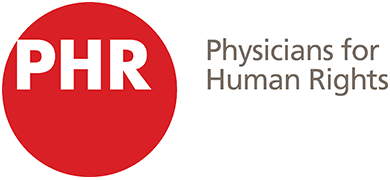We are just three weeks away from World Health Day (April 7) and the official launch of advocacy for the Global HEALTH Act of 2010. And we have now heard that Representative Barbara Lee will be introducing the bill in the coming days! Now more than ever we need you to be ready on April 7 to email or call your Congressperson urging him or her to co-sponsor this bill.Since the beginning of March, though this blog you’ve learned about the purpose of the Global HEALTH Act , garnered some great facts about the health workforce crisis, seen one of the many ways in which health systems can be measured and watched four health workers at Mbagathi Hospital talk about the challenges they face on a daily basis.Today’s post takes a closer look at some very important components of the Global HEALTH Act. But first, it is important to congratulate Representative Lee on the development of a bill that heralds a new way of working to strengthen and improve the health systems of developing countries, and the delivery of health services to the whole of the population in those countries. The bill calls on President Obama to develop a comprehensive US Global Health Strategy (the Strategy) that harmonizes and aligns all health-related US foreign assistance, and seeks to ensure that equity, non-discrimination, participation and accountability are embedded in the Strategy and, to the greatest extent possible, in the national health strategy of each country receiving direct assistance.This is a comprehensive bill, and it is not possible to review it here completely. Hence we have selected a few specific examples for you of how the bill advances the right of everyone to the enjoyment of the highest attainable standard of health:Equity and non-discrimination: An objective of the Strategy is to ensure that there is access to quality health services for poor, vulnerable or marginalized populations. Equity and non-discrimination permeate the bill. These issues are to be principal considerations in the construction or rehabilitation of health facilities, in the distribution of health services and health workers, and in the provision and distribution of medical, pharmaceutical and laboratory supplies. The ability of women and youth to use health services without fear, violence, discrimination or other mistreatment is one of the many principles that the President is called upon to encourage countries to include in their national health strategies.Participation:?There is a concern with participation throughout the bill. First, the Strategy itself is to be developed in consultation with all manner of individuals, groups and organizationsfrom executive agencies administering US foreign assistance, to US embassies and country missions, to civil society and nongovernmental organizations?in developing countries, to international organizationsand other donor nations. At the developing country level, the bill calls on the President to encourage countries receiving direct assistance to ensure meaningful participation in developing their national health strategies. This participation is to include the poor, vulnerable, or marginalized populations, as well as nongovernmental organizations, in program and budget decisions as well as in the implementation, monitoring and evaluation of the country’s national health strategy. Hence, the bill makes a direct link between equity, non-discrimination, participation and accountability.Accountability: The accountability process enables the government to identify what is working and what is not – to explain what it has been done and why – and to provide to individuals and communities the opportunity to understand how the government has discharged its obligations. Where mistakes have been made, accountability requires redress. It is a process that includes monitoring, mechanisms, remedies, and participation. The bill makes clear that the Strategy should have each of these components. The Strategy itself is to be monitored and evaluated for effectiveness. To allow this to take place, the Administration is to establish indicators to monitor the Strategy and provide annual reports to Congress. The bill authorizes the President to provide assistance to developing countries to improve the delivery of health services in those countries. The activities that have been authorized include direct support to civil society and nongovernmental organizations to monitor and evaluate their country’s health system. The President is also called upon to encourage countries to include in their national health strategies the development and implementation of sustainable legal frameworks that engage the whole of the population to monitor and enforce policies related to health. Ensuring there is a legal requirement to enable people to participate in monitoring and to enforce policies is essential for government accountability.The bill’s consistent focus on equity, non-discrimination, participation and accountability indirectly promotes the incorporation of a human rights approach to health into the Strategy. If the Strategy is developed and implemented, it will provide –?in time –?the proof that adoption of this approach improves health outcomes and the processes to achieve those health outcomes. This bill is to be applauded. It is essential that it obtain a large number of co-sponsors to demonstrate significant support for this legislation, which will help move this bill towards final passage. This is not only for the benefit of the populations in the countries receiving direct assistance but also for the benefit of the US. This bill has the potential to do more for the credibility of the US in the arena of human rights and global health than anything that has gone before.On April 7 BE READY to email your representative –?PLEASE!
